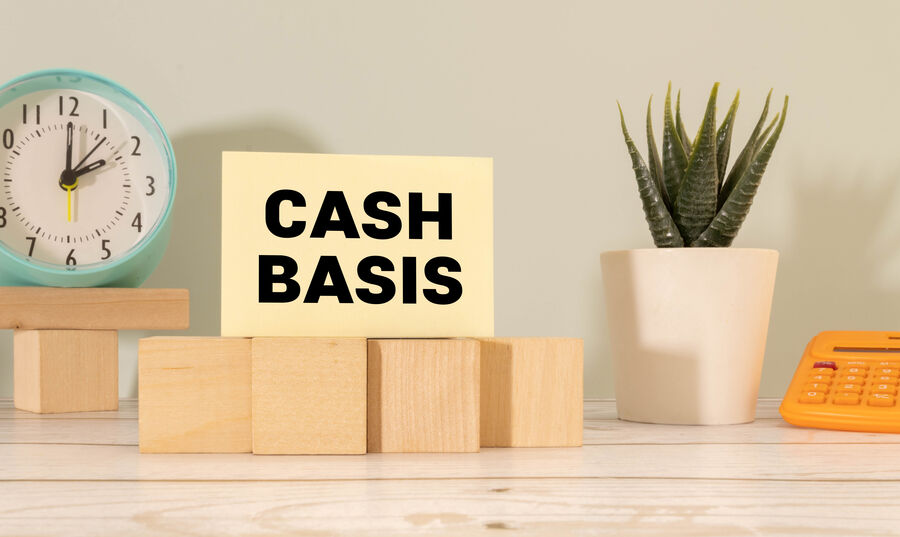The percentage of completion method (PCM), a means of recognizing income and expenses, is the required income tax method for long-term contracts A long-term contract is considered to be a contract that will not be completed in the same calendar year that it began. —unless the small contractor or home construction contract exceptions apply. Under PCM, only a portion of total contract income is recognized annually.
When you “recognize” income, you are recording it for tax or other reporting purposes. The portion of income recognized is calculated using one of three methods—and the most commonly used method is cost-to-cost. Using this process, the progress percentage is identified by dividing the total estimated contract costs by the contract costs to date.
Key takeaways
- Percentage of completion is a specialized accounting method for recognizing income from long-term contracts that is available to—and often required of—both cash and accrual basis taxpayers.
- The method recognizes income in annual intervals.
- This method provides a more timely view of the progress of a project, when compared to other methods of revenue recognition
- Heavy reliance on estimates could lead to misstatement of income and even a fraudulent presentation of income when estimates are intentionally manipulated.
How To Calculate the Percentage of Completion Method
To get started, you will need to have an estimate of:
- Total revenue expected to be earned over the life of the contract
- Costs expected to be incurred in that time frame
The estimated revenue amount should agree to the contract.
Step 1: Calculate Progress Percentage
This progress percentage (calculated through the cost-to-cost, units of delivery, or efforts expended methods) is a way to determine how far along in the contract you are. This progress percentage is then used to determine how much revenue you can recognize and how much expense you can deduct in the current year.
While there are three ways to calculate this, the method used primarily in industry is the cost-to-cost method. To use this method, divide the total costs for the contract by the total costs that have been expended to date.
Progress % | = | Costs incurred |
Total estimated costs |
Note that equipment costs should be apportioned throughout the contract and not taken as a lump sum deduction.
Step 2: Determine Costs To Be Reported for the Year
Calculate the current year costs to be reported by multiplying the total estimated costs by the progress percentage. Recognized costs will be actual costs if using the cost-to-cost method.
Step 3: Determine Revenue To Be Reported for the Year
Calculate the current year gross revenue amount to be reported for the year by multiplying the total contract revenue by the progress percentage. Total contract revenue should be identified in the construction contract.
Once you know the revenue amount to report, you’ll need to adjust your income at the end of the year with a journal entry presented below.
Percentage of Completion Calculation Example & Journal Entries
BuildStuff entered into a three-year contract to construct a building complex for the City of Kalona, Iowa. The estimated cost to build the structure is $15 million. BuildStuff expects to receive revenue of $21 million for this project. The contract between BuildStuff and Kalona states that BuildStuff will invoice the city 20% each year in years 1 and 2 and the balance in year 3.
Using the PCM of accounting steps listed above, BuildStuff, Inc. would recognize income as shown below. The tables also include information about invoices sent, as that will relate to the PCM journal entries shown later. This example uses the cost-to-cost method to arrive at the progress percentage. Here is a summary of the long-term contract details:
- Total estimated gross revenue: $21 million
- Total estimated costs: $15 million
- Total estimated gross profit: $6 million
- Year 1 costs: $4 million
- Year 2 costs: $1 million
- Year 3 costs: $10 million
- Invoices will be sent to the customer for 20% of revenue each year until the contract is completed
Click on the tabs below to see the calculations and journal entries for each year.
Who Should Use the Percentage of Completion Method?
Both cash and accrual taxpayers must still use it. Businesses that engage in long-term contracts generally have two or more accounting methods—and the main method could be cash or accrual and used for regular/ordinary business activity. However, a specialized method is needed specifically for long-term contracts, and this specialized method would generally be the PCM.
Exceptions to the Requirement To Use It
Taxpayers must use the PCM for all long-term contracts—unless they meet the exceptions the IRS provides for small contractors and home construction contracts.
- Small Contractor Exception:
- Construction must relate to real estate and structures permanently attached to that real estate
- Contract completed in two years or less
- Average sales over the last three years (starting with the year before the contract) is no greater than 29 million for contracts starting in 2023 (indexed annually for inflation)
- Home Construction Contract Exception: At least 80% of the contract costs must be related to construction of residential units and improvements to permanent attachments to that real estate.
Businesses excepted from the requirement to use PCM can use any method that reflects income, but using the completed contract method usually provides the best tax result because no revenue is recognized until the contract is completed.
Pros & Cons of Using the Percentage of Completion Method
| Benefits | Drawbacks |
|---|---|
| It allows for smooth recognition of income over the life of the contract; investors and other stakeholders have a timely view of project progress. | It requires estimates of revenue and costs—and estimates can be incorrect. |
| The rhythmic recognition of income helps the business manage tax liabilities by spreading the reporting of income over multiple years. | It is difficult to use if costs cannot be reasonably estimated. |
| Regular cost monitoring allows management to spot delays in the process and flush out bottlenecks. | Income may be recognized before the company receives payment. |
| Tax liabilities could arise before the cash is available to pay them. | |
| Business owners could fraudulently overestimate income to impress investors. | |
| More years of income means more years of exposure to potential hikes in tax rates. | |
Electing and Reporting the Percentage of Completion Method
You automatically elect your specialized method of accounting for long-term contracts by using that method on your first tax return. If you want to use a different method for accounting for long-term contracts on a subsequent return you’ll need to obtain permission to change the method using Form 3115.
Therefore, no special election is required to use the PCM as long as you haven’t used a different method in the past. If you have previously used a different method to account for long-term contracts and you choose to change to PCM, file form 3115 and attach it to your business tax return. File a separate copy and mail it to the address on the form 3115 instructions.
Frequently Asked Questions (FAQs)
The percentage of completion method is a means of recognizing income in which a percentage of profit is reported annually, representing the percentage of the project that has been completed.
The percentage of completion method spreads tax liability out over multiple years and helps free up cash flow.
If you used a different revenue recognition method in a prior year, you’ll need to file Form 3115 with your tax return and file a second copy with the IRS address provided on the Form 3115 instructions.
Bottom Line
The percentage of completion method allows you to recognize income and expense in stages as a project is completed. It portrays a timely view of a project’s status, but the accuracy of that view assumes that the income and expense estimates are reliable. Your tax advisor should be engaged to assist you in determining the appropriateness of this method for your business and guide you through your unique business processes.


